
Aboriginal Kangaroo Dot Painting Digital Art by Diane Picard
Aboriginal Dot paintings are commonly executed in both Ochre paintings and Acrylics, however Acrylic paint is the more commonly used for these artworks. The paint used may be highly textured with a very raised surface or flat. Perhaps the most proficient dot work is done by using well mixed acrylic paint with a high level of viscosity.

ABORIGINAL WAVES Aboriginal dot art, Aboriginal painting, Australian art
Learn aboriginal art dot painting techniques from this aboriginal art dot painting tutorial and aboriginal painting dots is so easy. Aboriginal painting less.

bnn.io ynn.io brisbane Aboriginal dot painting, Aboriginal art dot
Aboriginals expressed their art with natural materials such as rocks, sand, wood, bark, beeswax, reeds and occasionally bodily fluids. The people of the Australian deserts traditionally expressed their art with sand drawings, painting their bodies, and the more enduring rock paintings and engravings. 1. Yugambeh Aboriginal man in Queensland.
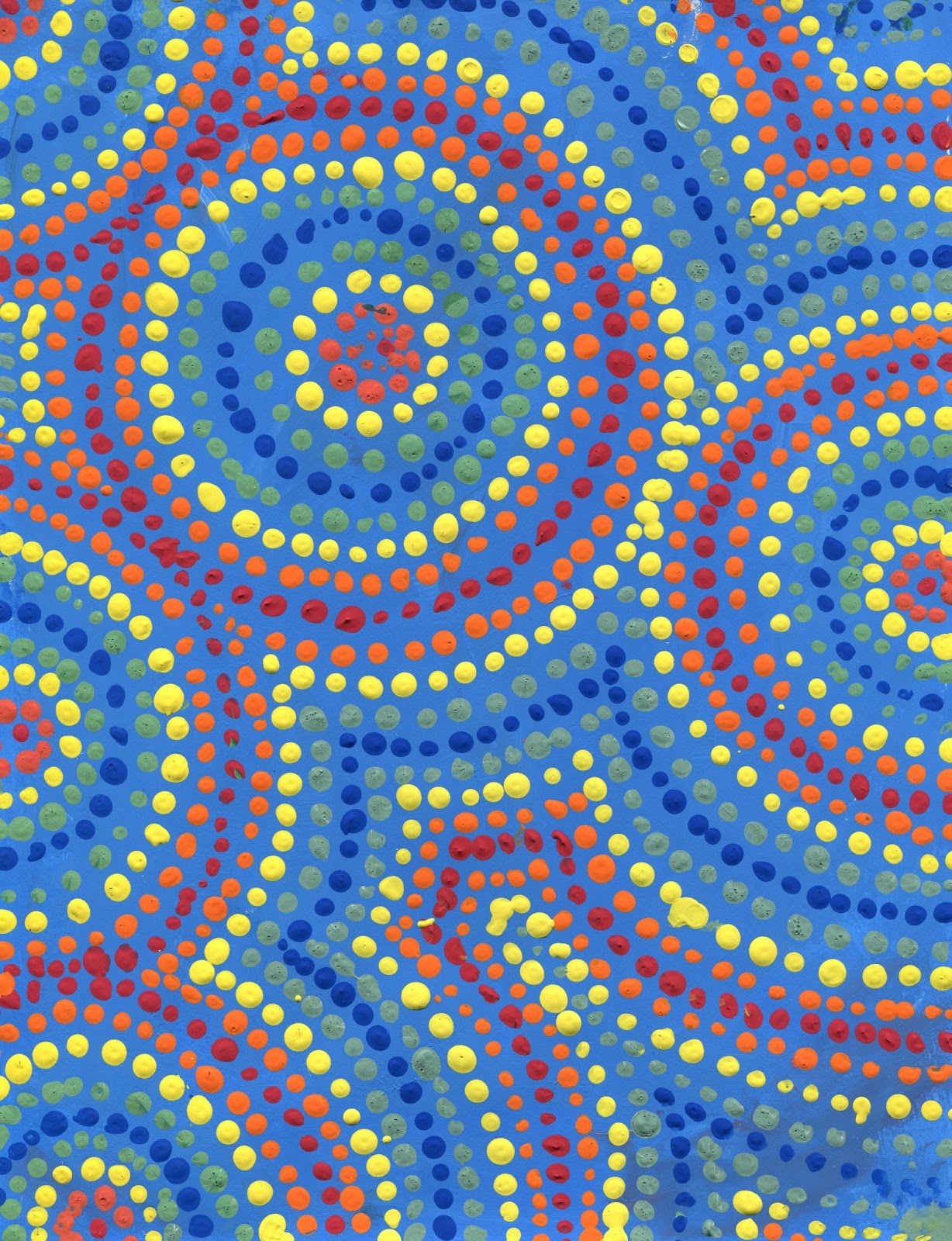
Mrs. Clement's Art Room Aboriginal Dot Painting
In summary, Aboriginal dot painting transcends time and space, encapsulating millennia of stories, beliefs, and experiences. This art form symbolises the resilience and beauty of Aboriginal culture, surviving colonisation and embracing modernity. Its ability to educate, inspire, and evoke admiration ensures that the voices of the world's oldest.

Australian Aboriginal Dot Art (4th) Art with Mrs. Nguyen
Rock art, bark paintings, and body art have all been integral forms of expression, with dot painting emerging as a distinctive and recognisable style. While dot motifs can be seen in ancient Aboriginal artworks, the contemporary style of dot painting that we recognise today began to gain prominence in the late 20th century, particularly from the 1970s onwards in the Central and Western Desert.
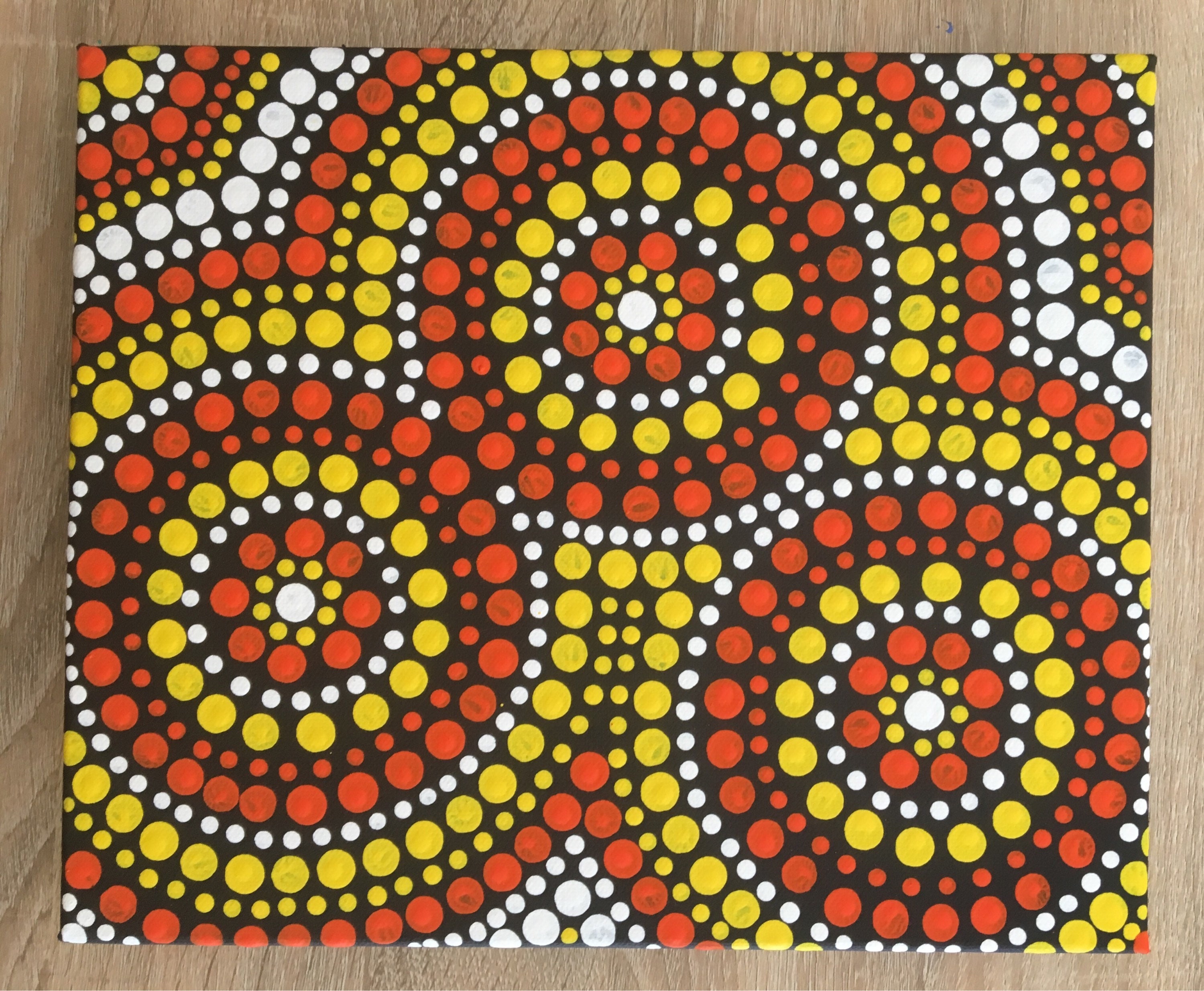
Aboriginal Dot Art on Canvas Wall Art Acrylic Colourful Etsy
Aboriginal dot paintings have both an artistic and anthropological significance, and nowadays are an important form of expression as well as a substantial way of income for many remote Indigenous communities. These pieces are extremely sought after around the globe. Just this past June, a collection was auctioned in London for over $2 million.

aboriginal art LIFE by angelofrage on deviantART Aboriginal dot art, Dots art, Aboriginal art
Dot painting: First popularised by the Papunya Tula School of Painters, the technique uses dots to abstract and disguise sacred designs in paintings. Indigenous art : Art made by an Aboriginal or.

Aboriginal Dot Paintings Aboriginal dot painting Pinterest Indigenous art, Dot painting
Aboriginal Dot Paintings are created by making several small dots of paint to create a cohesive whole — either depicting an image or a pattern. This relates to the Aborigine beliefs of order and union.. Check out our quick video on how to make an Australian Aboriginal-inspired Dot Art Painting for a fun art appreciation project for kids:

DNAAG Aboriginal Art Gallery Aboriginal dot art, Aboriginal art australian, Aboriginal art
F or a long time, the dot painting has been synonymous with Aboriginal art. Emerging out of the remote Northern Territory community of Papunya in the early 1970s, the first dot paintings were.
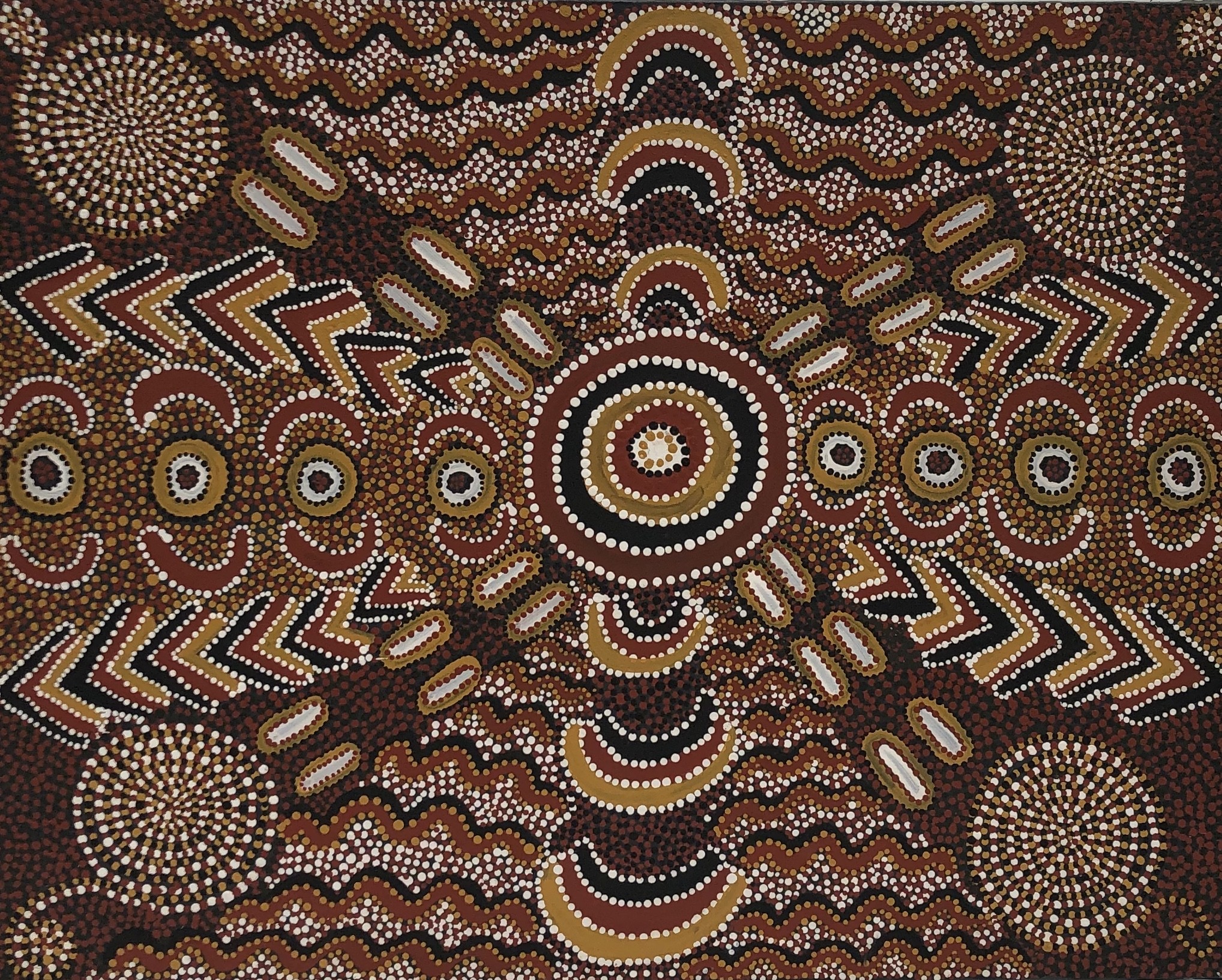
Untitled Aboriginal Dot Painting By Margaret Turner Petyarre The McCorry Collection
Some paintings are layered, and while they probably appear meaningless to non-Aborigines, the dot paintings might reveal much more to an Aboriginal person depending on their level of initiation. The first paintings to come from the Papunya Tula School of Painters weren't made to be sold. Papunya Tula Artists manager, Paul Sweeney, explains that.
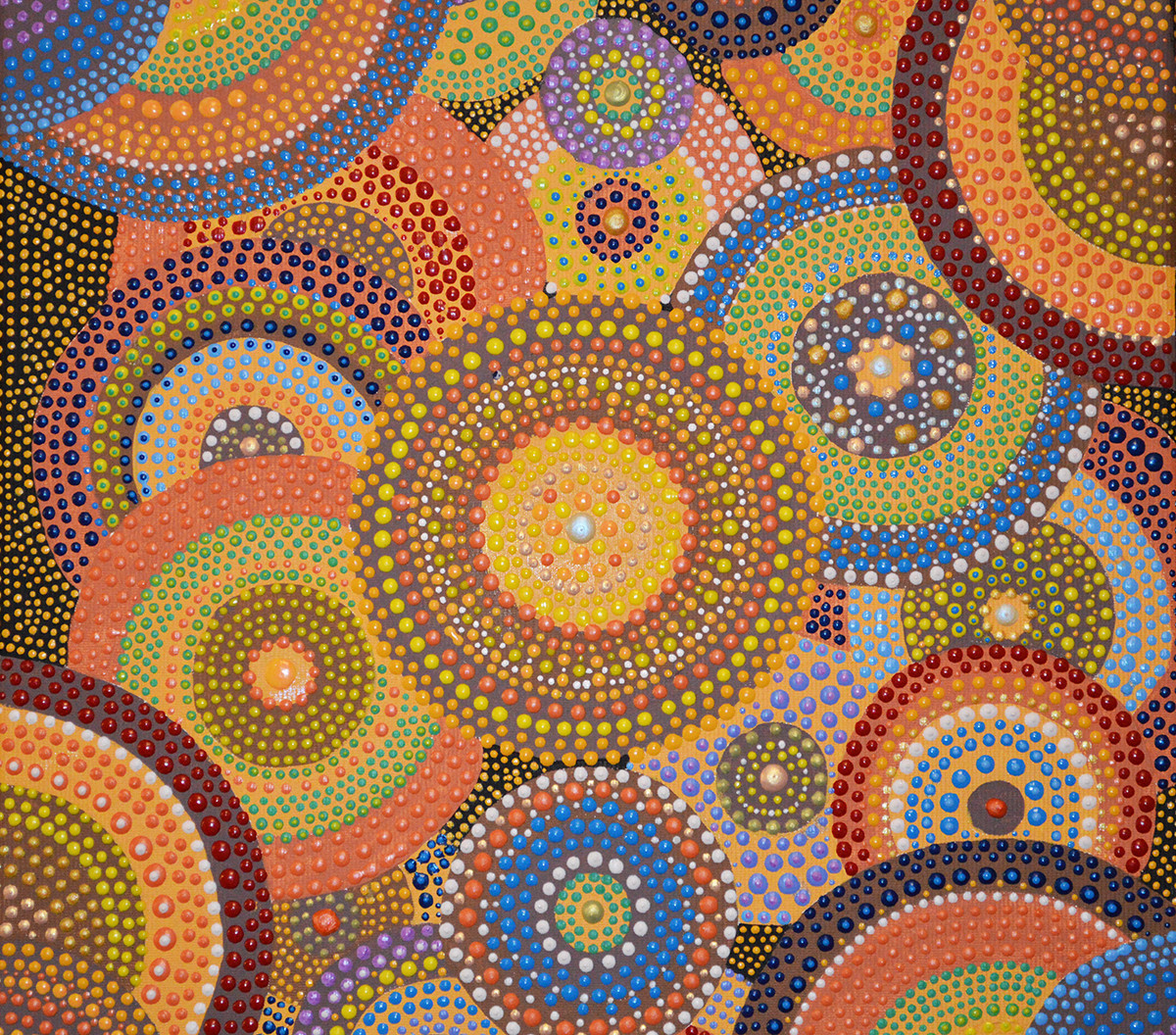
Circles Of Life Original Aboriginal Do, Painting by Olesea Arts Artmajeur
Aboriginal Dot Art. Dot paintings are now internationally recognised as unique and integral to Australian Aboriginal Art. The simple dot style as well as cross hatching maybe beautifully aesthetic to the eye but has a far more hidden meaning and deeper purpose; to disguise the sacred meanings behind the stories in the paintings. Before.
Sylvandale Middle School Art Class Aboriginal Dot Paintings
That way, only other people from their tribe could truly understand the message of the painting. Soon, the practice of Aboriginal dot painting became widespread. Aboriginal dot paintings can't be fully understood by outsiders. However, many still enjoy the paintings as art. The art form was one of the most popular of the late 20th Century.

Diy aboriginal dot art with acrylics on canvas Aboriginal dot art, Dots art, Tapestry
The dot painting style became the recognisable characteristic of desert Aboriginal art by the 1980s. The movement spread steadily to reach a range of the desert communities. Papunya, Kintore, Yuendumu, Mt Liebig, Haasts Bluff, Utopia, Balgo, Kiwirrkura and many smaller communities and outstations evolved variations in the way they went about painting and story-telling.

aboriginal dot painting Google Search Aboriginal Art Dot Painting, Aboriginal Artists, Dot Art
Aboriginal dot painting is a mesmerizing art form that uses dots to create intricate patterns and designs. The use of dots in Aboriginal art represents the connection between everything in the universe. Each dot represents a specific element in nature, such as water, fire, earth, or air. When combined, these dots create beautiful patterns that.
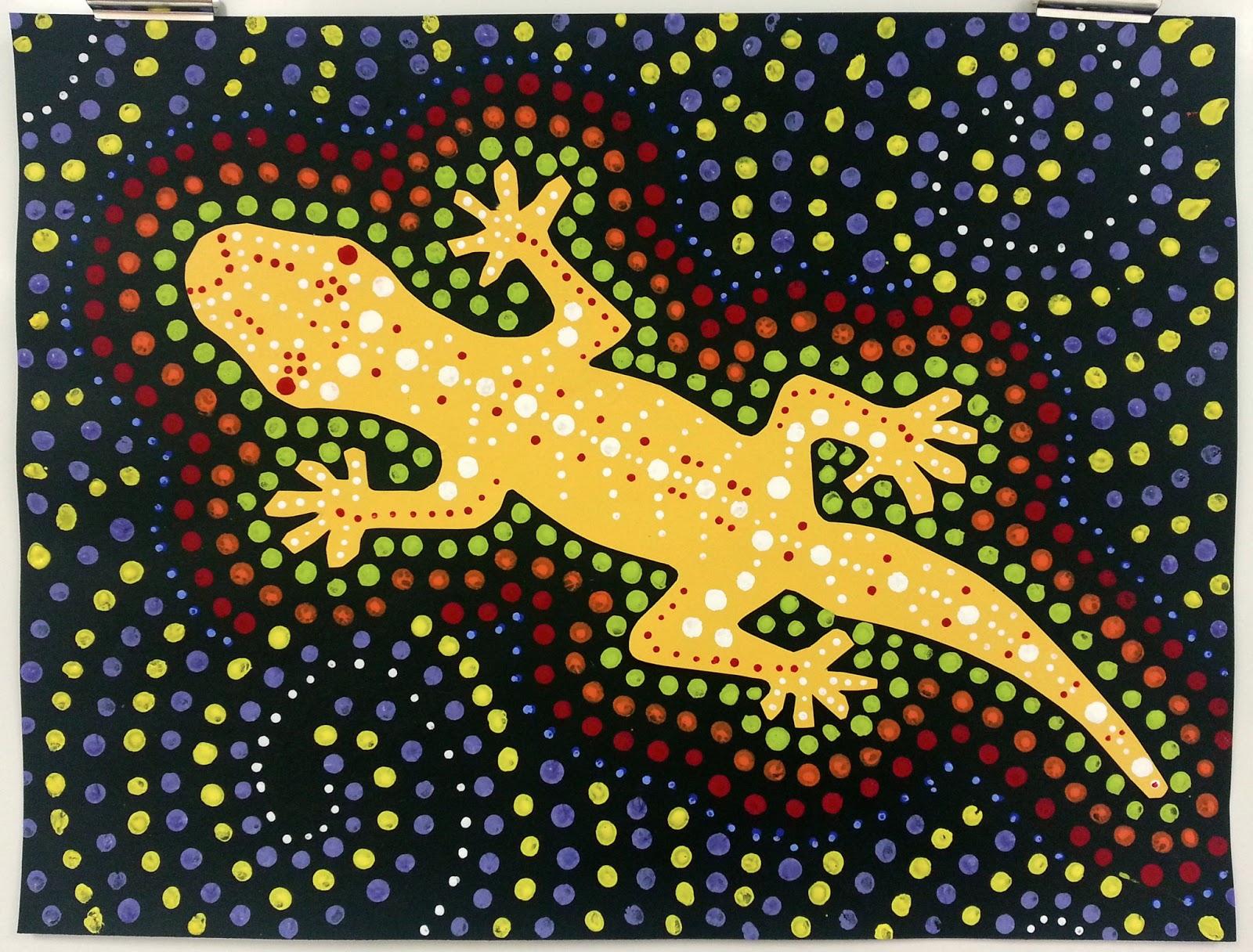
Art with Mrs. Nguyen Australian Aboriginal Dot Art (4th)
One of the most iconic forms of Aboriginal art is dot painting, which involves the use of small dots to create intricate patterns and designs. Each dot represents a specific element or feature of the Dreamtime story being depicted. For example, a dot might represent a waterhole, a campfire, or a particular animal or plant..
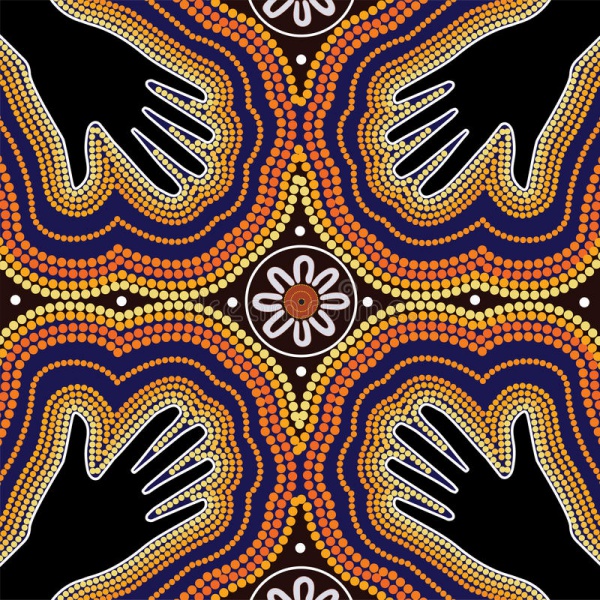
40 Damn Good Aboriginal Art Dot Paintings
Dot painting is a unique and intricate art form that has evolved over time, and it is deeply rooted in the Dreamtime stories and spiritual beliefs of the Aboriginal people. The history of dot painting can be traced back to the early 1970s, when a group of Aboriginal artists in the Western Desert region of Australia began experimenting with new techniques and styles.